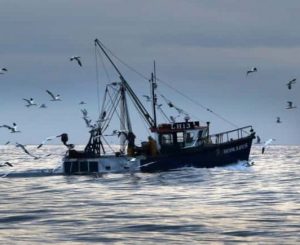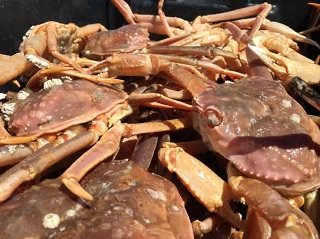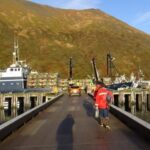Daily Archives: November 23, 2018

Falling overboard is the second biggest killer of U.S. fishermen, second only to vessel sinkings.
From 2000 through 2016, 204 fishermen died after falling overboard. Nearly 60 percent were not witnessed and nearly 90 percent were never found. In every case, not one fisherman was wearing a life jacket. “I think there is a social stigma against it. It doesn’t look cool, it’s a sort of macho thing. I also think there is a lack of awareness of the fact that there are really comfortable, wearable PFDs.” Jerry Dzugan is director of the Alaska Marine Safety Education Association. >audio report, click to read<16:32

Brian Wilson: The scales must fall from our eyes
The Scottish fishing industry is in the hands of a wealthy few – but will Brexit, whatever form it takes, change anything, asks Brian Wilson Let’s be honest – the vast majority know little about the fishing industry while evincing general sympathy towards those who go to sea in order to put food upon our tables. When fishermen protest about the Common Fisheries Policy they tend to benefit from that empathy because it is easier to concur that “Brussels is to blame” than look for villains closer to home. >click to read<16:03

FISH-NL accuses FFAW of fake outrage and hypocrisy over new snow crab management strategy
The federal Department of Fisheries and Oceans (DFO) held meetings earlier this week in St. John’s, Clarenville, and Gander to consult inshore harvesters on a proposed new management strategy for snow crab. The so-called Precautionary Approach includes stock status zones such as critical, cautious and healthy, as well as reference points and harvesters control rules. A huge contingent of FFAW-Unifor executive members slammed DFO at the public meetings for blindsiding inshore harvesters, accusing the department of bringing them into the discussion at a “late stage.” >click to read<

Researchers work on better model for impact of fishery closures
Fisheries managers are faced with a firestorm every time they decide to close a fishery because of poor returns or low population numbers. A new economic model is trying to help them see into the future to understand the effects of a closure before it happens.,, It takes into account items like fishery participation, the amount of each vessel’s annual revenue that comes from the affected fishery, which vessels participate in other fisheries and the value of the fishery; the aim is to calculate the total impact when managers have to limit or close a fishery. >click to read<11:59

‘Lobster War’ zones in on U.S.-Canada turf dispute
“A fisherman is born not made.” Those words, from the film Lobster War, may ring true to the island fishing community, and to fishermen throughout New England, Canada and beyond. And, just as lobstermen often pass their expertise and way of life down through the generations, so, too, can turf conflicts begin over long-held family fishing areas. In Lobster War, the disputed turf is 270 square miles of ocean on the U.S.-Canada border, and the “families” are Maine and Canadian lobstermen. >click to read<11:12

SAR resources will be in place for lobster season opening in southwest Nova Scotia
A full complement of Search and Rescue (SAR) resources will be on the water and standing by when the commercial lobster fishery in LFAs 33 and 34 opens. “We’re in the business of planning for the worst and hoping for the best,” said Marc Ouellette, Canadian Coast Guard Regional Supervisor for Maritime Search and Rescue at the Joint Rescue Coordination Centre (JRCC) in Halifax.,, Ouellette said there’s a strategy in place for the opening of the LFA 33 and 34 fishery, which is repeated every year without too much modification and is based on the amount of marine traffic and the risk identified through studies of what is high risk for SAR coverage. >click to read<10:21










































